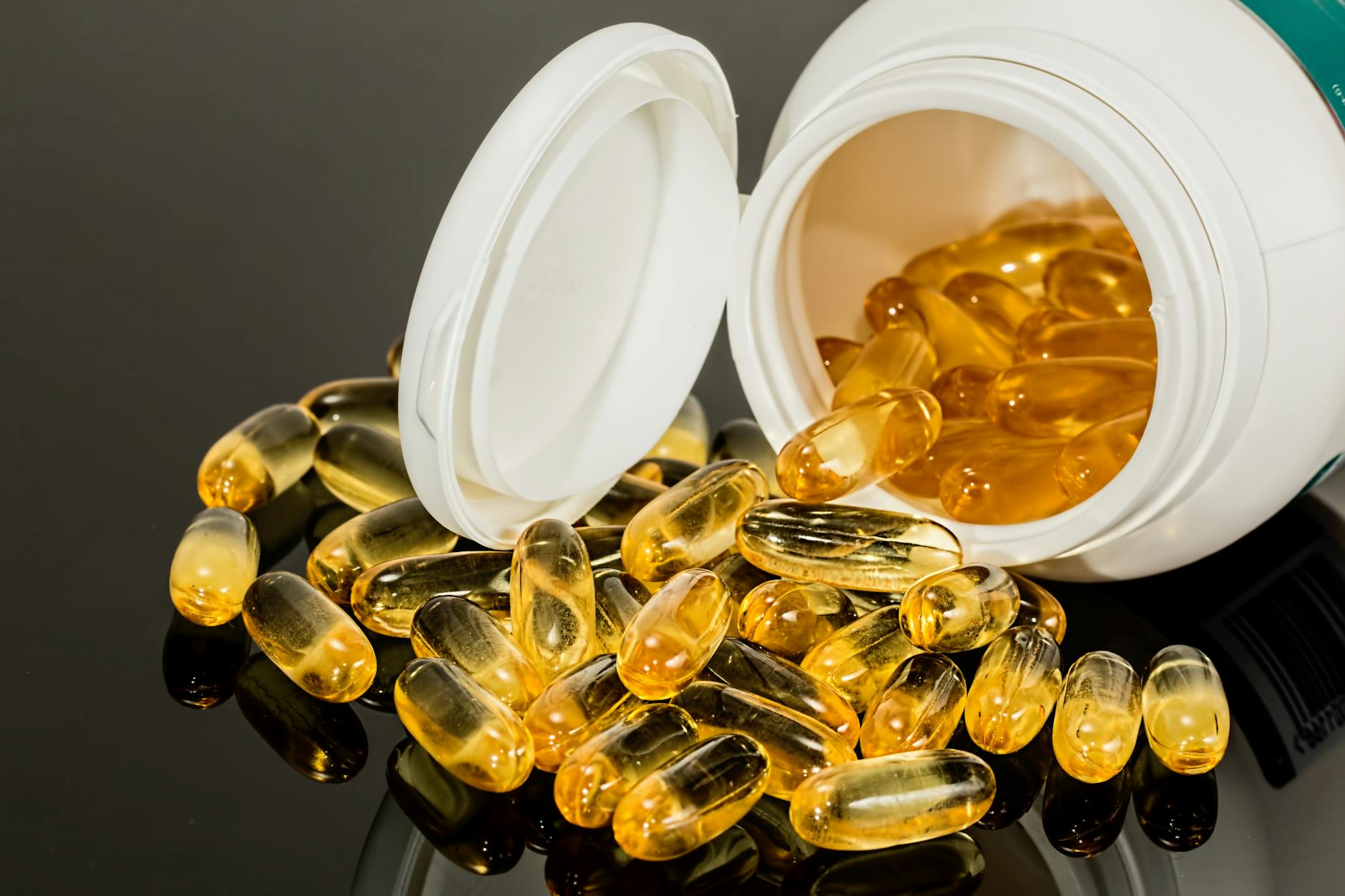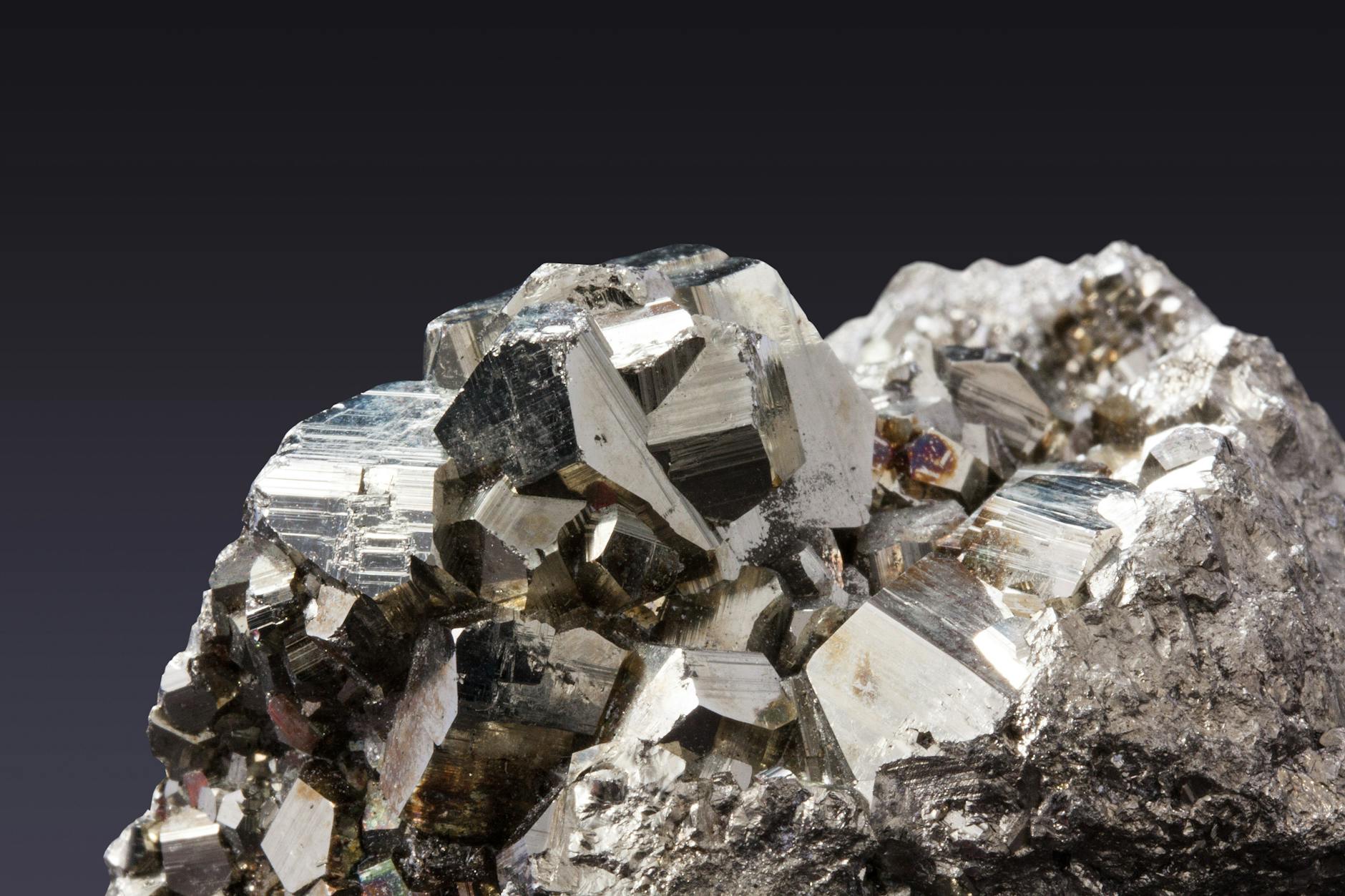
In the past, we’ve talked about macronutrients and we learned that they play a major role in everything from losing weight to putting on muscle and that macronutrients is just a fancy word for protein, carbohydrates and fats. But the very term MACROnutrients implies that there must also be MICROnutrients – and there are! But what are they and how do they differ from macronutrients? Moreover, why should we care?
Today, I’m going to look into this and we’re going to unpack a lot of information about micronutrients, so strap on your helmets boys and girls, it’s going to be a bumpy ride!
What Are Micronutrients?

The short story is micronutrients are chemical elements that are required by your body for normal growth and development – but in much smaller amounts than their big brothers the macronutrients. The term “chemical elements” sounds a lot more intimidating than it needs to. The truth is they’re probably things that you’re already familiar with: vitamins, minerals, trace minerals, phytochemicals, essential amino acids and essential fatty acids – OK, maybe you’re NOT familiar with ALL of these!
Let’s break this down into more specific things so that we can start looking at them in greater detail and analyze what exactly these things do for you:
Vitamins: A,B1,B2,B3,B5,B6,B8,B9,B12,C,D,E,K.
Minerals: calcium, magnesium, choline, phosphorus, potassium and sodium
Trace minerals: iron, copper, zinc, iodine, manganese, chromium, cobalt, selenium
Phytochemicals chemical compounds found in plants
Essential amino acids: such as phenylalanine, valine, threonine, tryptophan, methionine, leucine, isoleucine, lysine, and histidine.
Essential fatty acids: such as omega 3 and 6 polyunsaturated fats
OK, so that’s a lot of terms from High School chemistry class and it also seems like a lot of chemicals that we need to be trying to find a way to consume EACH DAY – oh yeah, that’s in addition to the proteins, carbs and fats that we need to eat in order to stay healthy. Do we REALLY need all of those things? Let’s look at what they do for your body so we can make a more intelligent, results based decision. If full understanding isn’t for you – just scroll past all the gray highlighted information to skip the details!
The Vitamins

Vitamin A or retinol is important for normal vision, the immune system, and reproduction. Vitamin A also helps the heart, lungs, kidneys, and other organs work properly.
The B Complex All eight of the B vitamins are part of what is called the “B Vitamin Complex” or “B-Complex”. They are water soluble, so easily absorbed by the body. Each one helps convert macronutrients into energy, in addition to various other functions.
Vitamin B1 or thiamine is essential for glucose metabolism, and it plays a key role in nerve, muscle, and heart function.
Vitamin B2 or riboflavin plays a vital role in maintaining the body’s energy supply. It helps convert carbohydrates into adenosine triphosphate (ATP) which produces energy as the body requires it and is vital for storing energy in muscles.
Vitamin B3 or niacin serves many functions including removing harmful chemicals from the liver (pay attention you weekend warriors!). It is also used for treating migraine headaches, circulation problems and dizziness. Taking niacin may also help stroke patients.
Vitamin B5 or pantothenic acid is one of the most important vitamins for human life as it is necessary for making blood cells. It is also involved in hormone and cholesterol production.
Vitamin B6 or pyridoxine also helps with the creation of red blood cells but also neurotransmitters (according to the national institute of health).
Vitamin B8 or inositol helps with fat metabolism, insulin signaling, and nerve functioning.
Vitamin B9 or folic acid claims a host of benefits, but is required for DNA synthesis and for the metabolism of amino acids. Some of the other benefits it claims are preventing birth defects and premature aging, preventing heart attacks, curing certain mental disorders and helping your body produce more red blood cells. Additionally it can combat depression, act as a coenzyme, support muscle build-up, combat free radicals, prevent cancer and aid with fertility!
Vitamin B12 I couldn’t find an alternate name for B12, but it helps keep the body’s nerve and blood cells healthy and helps make DNA. It also helps prevent megaloblastic anemia which makes people tired and weak. Lastly, for you vegetarians out there, it’s important to note that there is a lack of B12 in vegetables.
Vitamin C or ascorbic acid is an antioxidant, helping to protect cells from damage, it makes collagen which helps wounds heal. It also improves the absorption of iron from plant-based foods and helps the immune system work properly.
Vitamin D or ergocalciferol helps maintain strong bones by aiding in calcium absorption from food and supplements. It is widely used by many body systems, muscle needs it to move, nerves use it to carry impulses throughout the brain and body and the immune system uses it to help fight viruses and bacteria. This one can be a freebie, as your skin manufactures Vitamin D from sunlight – so get outside!
Vitamin E or D-alpha tocopheryl succinate (let’s stick with Vitamin E!) acts as an antioxidant and also widens blood vessels to keep blood from clotting within them. There are also strong claims that it can aid with skin health by reducing UV damage to skin.
Vitamin K or Koagulationsvitamin helps with blood clotting, bone metabolism, and regulation of blood calcium levels.
The Minerals

Calcium performs numerous functions, including building bones and keeping them healthy, it enables our blood to clot, our muscles to contract, and our heart to beat.
Magnesium regulates muscle and nerve function, blood sugar levels, and blood pressure. It also makes protein, bone, and DNA.
Choline assists with metabolism and is vital for the health of cell membranes. It is needed to produce the neurotransmitter acetylcholine which is important for memory, muscle control, mood and other brain and nervous system functions.
Phosphorus assists with building strong bones, and cellular health. It is also involved with the body’s energy production.
Potassium helps regulate muscle contractions, maintain healthy nerve function and regulate fluid balance.
Sodium is an electrolyte that helps maintain the balance of water in and around your cells. It’s important for proper muscle and nerve function and helps maintain stable blood pressure levels.
The Trace Minerals

Iron is a key component in red blood cell health. Specifically in hemoglobin – thats the part of a red blood cell that carries oxygen to all of the parts of your body that need it (you can interpret that as “everything”). It also helps with the production of new cells and helps your immune system fight off infection.
Copper is iron’s partner in crime, helping it to form red blood cells. In addition, it also helps your body absorb iron, so the two are a pretty important team. It also plays a role in bone health, blood vessels, nerve and immune function.
Zinc assists your immune system in fighting off bacteria and viruses, and helps make proteins and DNA. It also helps wounds to heal and is important for your sense of taste and smell to function properly via the production of enzymes critical to these senses.
Iodine creates thyroid hormones which help control your metabolism and may other facets of your body.
Manganese is responsible for proper brain and nervous system function as well as many of your enzyme systems. There are a number of other health benefits attributed to manganese including bone health, antioxidant and anti-inflammatory properties, blood sugar regulation and several more.
Chromium improves insulin sensitivity, lowering glucose levels and enhances the metabolism of your macronutrients. There are some other potential claims of chromium including increasing muscle building and weight loss, but the studies outlining this are mixed.
Cobalt works with the body to help with the absorption of vitamin B12, in addition, it aids in the repair of myelin which protects nerve cells, can treat illnesses like anemia and also helps produce hemoglobin.
Selenium serves many functions in order to keep you healthy it’s important for reproduction, thyroid gland function, production of DNA and protects the body from free radicals.
Phytochemicals

Phytochemicals is a broad term. In fact, tens of thousands of phytochemicals have been identified with MANY different effects on our bodies. generally speaking though, their primary role is to help your body fight off disease.
According to a 2013 article in Today’s Dietician:
“Tens of thousands of phytochemicals have been identified, and researchers speculate that there are likely many more they haven’t yet discovered in the foods we eat. Though the broadest groups of phytochemicals, such as flavonoids, isoflavones, or anthocyanidins, often are referred to as if they were a homogenous group, the individual compounds within each group have different chemical structures, are metabolized differently by the body, and may have different health effects.
Flavonoids are the largest, most varied, and most studied group of phytochemicals. In fact, more than 6,000 flavonoids that occur in plant foods have been described. Plants typically produce several phytochemicals that act as a protective mechanism against environmental stressors; the more environmental stressors, the more phytochemicals a plant produces. As a result, phytochemical content can vary with growing conditions.”
There’s a TON of information in the article if you’re interested. I’ll post a link in the resources section below as well.
Essential Amino Acids

Amino acids are what the macronutrient protein is broken down into. There are numerous amino acids, but nine of them are considered “essential” because our bodies cannot synthesize them on its own. the nine essential amino acids are: phenylalanine, valine, threonine, tryptophan, methionine, leucine, isoleucine, lysine, and histidine. We went into a breakdown of each of these in the macronutrients post, so I won’t bore you with them again, but feel free to click the link if you want to learn more about each of the nine’s specific roles.
Essential Fatty Acids

Essential fatty acids, like the essential amino acids, are something that your body cannot make.
Omega 3’s help reduce inflammation, reduce the symptoms of depression, are important for brain development and function, increase HDL cholesterol (the good kind), reduce blood pressure and the formation of arterial plaques.
Omega 6’s produce pro-inflamatory eicosanoids which aid the immune system and can treat symptoms of chronic disease and rheumatoid arthritis. There have also been studies that show Omega 6 – GLA supplements – can help increase the effectiveness of certain breast cancer drugs and CLA supplements have been associated with reduction of body fat mass.
So How Much of Each Micronutrient Do I Need?
That’s a really good question. Unfortunately, the answer isn’t very simple to give. I had originally planned on making a handy chart – similar to the pie chart I provided in the macronutrients article. Sadly, micronutrients are a lot more complicated than that. The proper amount of micronutrients varies depending on your age, weight and gender. The good news is the US Department of Agriculture has created a calculator that will let you determine most of this information just by answering a couple of questions. Finally our tax dollars put to good use! Head over there and check it out – I’ll link it in the resources section of the article as well so you can keep reading this uninterrupted.
So Where Do I Get All of These Vitamins and Chemical Compounds?

The short answer is – in the food that you eat. Whether the source is junk food or healthy nutritious food, you’re feeding your body chemicals. The obvious answer is that the nutrients that you NEED to stay healthy are FAR more prevalent in healthy nutritious foods than they are in the garbage that tastes so good – but is so crappy for you. It actually makes it easier to understand why junk food is so bad for you. In addition to imbalancing your macros and giving you an excess of one macro category over the others (which your body then converts into fat for storage). It fills you up with less nutrient dense food. Meaning that you’re not able to eat the foods that are going to give your body what it NEEDS vs. what your brain WANTS you to eat to feel the temporary satisfaction of eating a donut or greasy burger that it may be addicted to. The end result is that our bodies are starved for properly balanced macronutrients and micronutrients.
If you’ve been keeping score, or used the calculator at the USDA, you’ve probably already come to the realization that this is a hell of a lot of stuff to try to keep track of! Trying to manage and track your nutrients per meal to this level of detail would be a lot of work, and I couldn’t agree more. The global advice I always run into is “It’s best and healthiest to get these nutrients from REAL food”, and I can only presume that this advice is sound. It’s how we were designed as human beings – natural food goes in, body processes food, nutrients are distributed, waste goes out. It’s not rocket science (but it may be a little brain science).
If you don’t want a second job of tracking your nutrition, I would recommend the following course of action:
1) Track your macros
2) Eat REAL healthy foods (not junk food – garbage in, garbage out)
3) Take a multivitamin every morning
4) Consider taking a fish oil supplement daily for your Omega’s
5) Live a healthy lifestyle
Your first step in making sure that you get the micronutrients that you need should be cleaning up your diet. Read through the macronutrients article and follow it as a guideline in making sure that you’re eating healthy food options. Cut out the junk and over time, you truly wont even miss it. That’s not to say that you can never eat a cheeseburger again (I’d be a hypocrite if I told you I had cut them out!) but they should be the exception – not the rule in your diet.
Now that you’ve cleaned up your diet, start tracking it with an app like MyFitnessPal which will tell you exactly what your macro- and micro-nutrient consumption looks like. Pay attention to areas where you’re falling short and try to make up the difference with healthy foods.
Lastly, now that you’ve done your best to eat healthy, a good multivitamin and fish oil supplement are just going to help push you over the top and make sure that you’re getting the proper amount of micronutrients each day. I’m a fan of the Centrum vitamin line as it seems to hit many of the micronutrients listed here as well as some additional vitamins and minerals we’ve not discussed. Regarding fish oil, look for something that gives you between 250 to 500 mg of EPA and DHA Omega 3.
As far as Omega 6, goes, I wouldn’t recommend supplementing this. Web MD goes out of it’s way to denote that omega 6 is LIKELY SAFE rather than wholeheartedly endorsing it. Since Omega 6 can raise triglyceride levels, the juice just doesn’t seem worth the squeeze with this one. Because Omega 6 is a polyunsaturated fat found in vegetable oils, nuts and seeds, you’re likely getting plenty of it hidden away in other areas of your diet anyway.
In short, multivitamins and fish oil supplements can help ensure that you’re getting what you need without having to overeat a pound of kale dressed in olive oil to make up the difference you’re missing in Vitamin K and omega 3 at the end of the day. (however, eat your kale, it’s FILLED with a LOT of micronutrients).
So how IS your micronutrient intake? Are you getting what you need or are you falling short? Have you made some changes and are now getting what you need? What differences have you noticed? Let me know if the comments below!
Know someone who might like this article? Please share it with them, or via your social media network, it helps the blog out, and you never know who you might be responsible for motivating to live a healthier lifestyle!
Resources:
Top 3 Micronutrients You Are Missing, Yet Desperately Need
“Antioxidants?” Micronutrients? Macronutrients? Phytochemicals? What Are They?
Wikipedia -List of micronutrients
The National Institutes of Health
Phytochemicals’ Role in Good Health – Today’s Dietician
Omega 3-6-9 Fatty Acids: A Complete Overview – Healthline
United States Department Of Agriculture Dietary Reference Intake Calculator
7 thoughts on “Micronutrients”